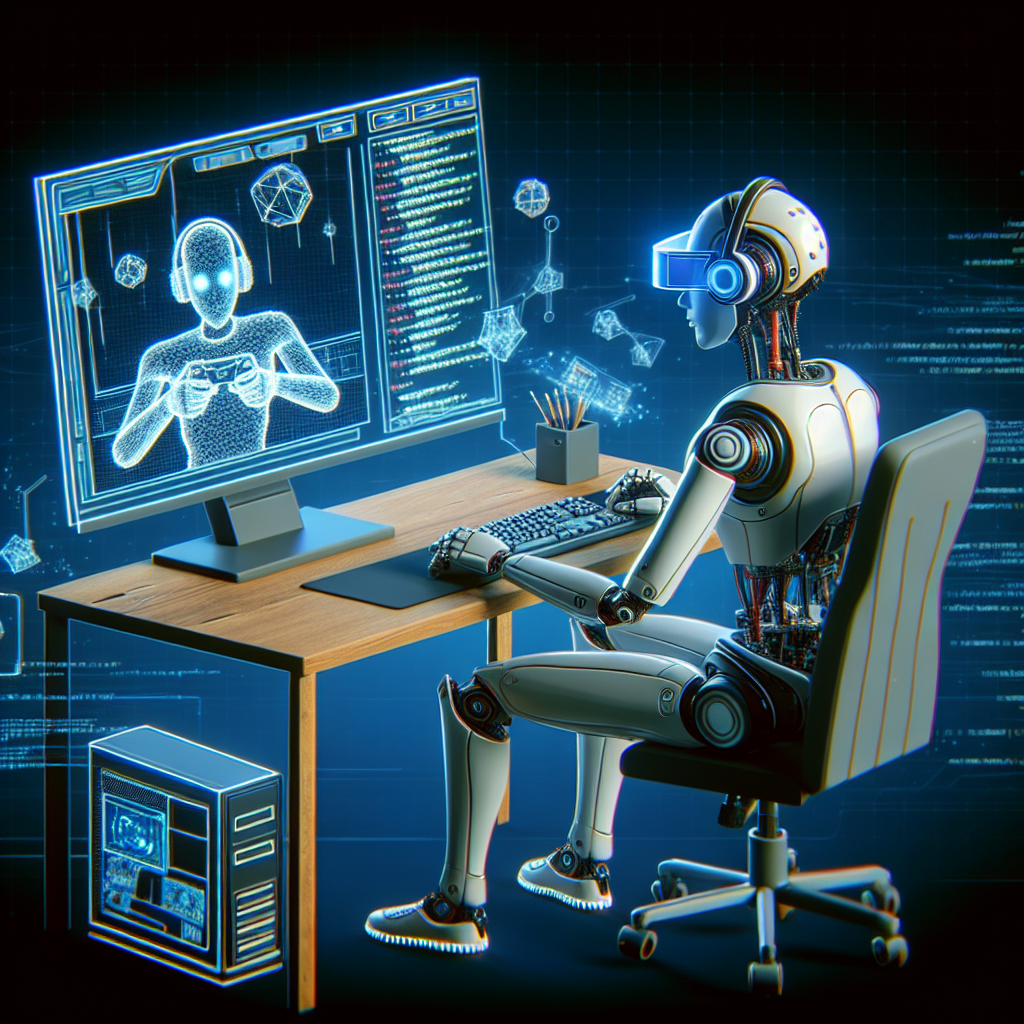Artificial intelligence (AI) has been making waves in various industries, revolutionizing processes and making tasks more efficient. One such industry that has seen significant advancements with the use of AI is game testing. Game testing is a crucial part of the game development process, as it ensures that the game is free of bugs, glitches, and other issues before it is released to the public. With the help of AI, game testing has become more accurate, faster, and cost-effective.
AI in game testing works by using algorithms and machine learning techniques to automate the testing process. This means that AI can simulate human-like behavior in playing a game, detecting bugs, and providing feedback to developers. AI can help identify issues in the game that may be difficult for human testers to find, such as subtle bugs or inconsistencies in the game mechanics.
One of the key benefits of using AI in game testing is its ability to perform repetitive tasks quickly and accurately. AI can run thousands of test cases in a fraction of the time it would take a human tester to do so. This not only speeds up the testing process but also allows developers to catch more bugs and issues before the game is released.
Another advantage of using AI in game testing is its ability to learn and adapt to different game environments. AI can be trained to recognize patterns and anomalies in the game, allowing it to detect bugs that may not be obvious to human testers. This can help developers improve the overall quality of the game and provide a better user experience for players.
AI can also help reduce the cost of game testing. By automating the testing process, developers can save time and resources that would have been spent on manual testing. This can result in faster development cycles and lower production costs, ultimately leading to a more profitable game release.
FAQs:
Q: How does AI in game testing differ from traditional testing methods?
A: AI in game testing uses algorithms and machine learning techniques to automate the testing process, while traditional testing methods rely on human testers to manually test the game. AI can perform tests faster, more accurately, and can detect subtle bugs that may be missed by human testers.
Q: Can AI completely replace human testers in game testing?
A: While AI can automate many aspects of game testing, human testers are still essential for providing feedback on the overall user experience of the game. Human testers can provide valuable insights that AI may not be able to detect, such as subjective feedback on gameplay and level design.
Q: How can developers integrate AI into their game testing process?
A: Developers can integrate AI into their game testing process by using AI-powered testing tools and platforms. These tools can automate the testing process, identify bugs, and provide feedback to developers. Developers can also train AI models to recognize specific patterns and anomalies in the game to improve testing accuracy.
Q: Are there any limitations to using AI in game testing?
A: While AI can automate many aspects of game testing, there are limitations to its capabilities. AI may not be able to detect all types of bugs, especially those that require human intuition or creativity to identify. Additionally, AI models may require constant training and updates to keep up with new game environments and mechanics.
In conclusion, the use of AI in game testing has the potential to revolutionize the way games are developed and tested. By automating the testing process, AI can help developers catch more bugs, improve the overall quality of the game, and reduce production costs. While AI may not completely replace human testers, it can work alongside them to provide faster and more accurate testing results. As AI technology continues to advance, we can expect to see even more innovations in game testing that will benefit both developers and players alike.

